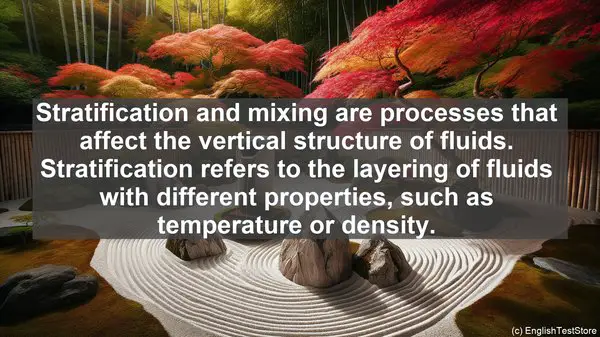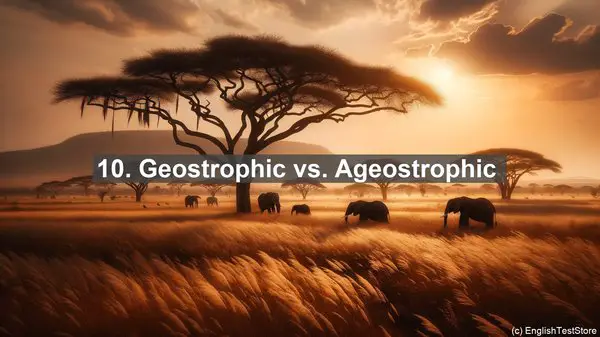Introduction: The Language of Geophysical Fluid Dynamics
Geophysical Fluid Dynamics is a complex field that deals with the study of fluid motion in the Earth’s atmosphere and oceans. Like any scientific discipline, it has its own set of specialized vocabulary. However, some words in this domain are often used interchangeably or misinterpreted, leading to misunderstandings. Let’s begin our exploration of these commonly confused terms.
1. Viscosity vs. Vorticity
Viscosity refers to a fluid’s resistance to flow, while vorticity is a measure of the local rotation of fluid elements. Although both are related to fluid motion, they represent different aspects. Viscosity determines the fluid’s internal friction, while vorticity indicates the presence of fluid rotation. Understanding this distinction is crucial for analyzing various flow phenomena.
2. Advection vs. Diffusion
Advection and diffusion are two fundamental processes in fluid dynamics. Advection refers to the transport of a property by the bulk motion of the fluid, while diffusion involves the gradual mixing of the property due to molecular motion. In simpler terms, advection is like carrying a dye in a flowing river, while diffusion is the gradual spreading of that dye over time. Both processes play significant roles in the Earth’s fluid systems.

3. Convection vs. Conduction
Convection and conduction are modes of heat transfer. Convection involves the transfer of heat through the movement of fluid, while conduction is the transfer of heat through direct contact between particles. A classic example of convection is the heating of a room through a radiator, where the warm air rises, creating a circulation pattern. Conduction, on the other hand, is like touching a hot object and feeling the heat transfer.
4. Equilibrium vs. Steady State
Equilibrium and steady state are often used interchangeably, but they have distinct meanings. Equilibrium refers to a balanced state where there is no net change, while steady state implies a condition where the system’s properties remain constant over time, despite continuous input and output. Understanding these terms is crucial for studying the long-term behavior of geophysical systems.
5. Isobar vs. Isotherm
Isobars and isotherms are lines used in weather maps. Isobars connect points of equal atmospheric pressure, while isotherms connect points of equal temperature. By analyzing the distribution of these lines, meteorologists can infer the weather conditions and identify features like high and low-pressure systems. Confusing these terms can lead to inaccurate weather predictions.
6. Anomaly vs. Deviation
Anomaly and deviation are often used in the context of data analysis. Anomaly refers to a departure from the expected or normal value, while deviation is a measure of the difference between an observed value and a reference value. Anomaly detection is crucial in identifying unusual patterns or events in geophysical data, while deviation helps quantify the extent of the difference.
7. Upwelling vs. Downwelling
Upwelling and downwelling are terms used in oceanography. Upwelling refers to the upward movement of deep, nutrient-rich water to the surface, while downwelling is the opposite, where surface water sinks to deeper layers. These vertical movements play a vital role in nutrient distribution, marine ecosystems, and even climate patterns.
8. Rossby Wave vs. Kelvin Wave
Rossby waves and Kelvin waves are types of waves that occur in rotating fluid systems. Rossby waves are large-scale, meandering waves that are influenced by the Earth’s rotation, while Kelvin waves are fast-moving, shallow waves that are driven by changes in the ocean’s thermocline. Both types of waves have significant impacts on weather and ocean circulation.
9. Stratification vs. Mixing
Stratification and mixing are processes that affect the vertical structure of fluids. Stratification refers to the layering of fluids with different properties, such as temperature or density. Mixing, on the other hand, involves the vertical exchange of these properties, leading to a more uniform distribution. Understanding these processes is crucial for studying phenomena like oceanic overturning and atmospheric stability.
10. Geostrophic vs. Ageostrophic
Geostrophic and ageostrophic winds are terms used in meteorology. Geostrophic winds are large-scale, horizontal winds that result from a balance between the pressure gradient force and the Coriolis effect. Ageostrophic winds, on the other hand, deviate from this balance and are influenced by other factors like friction. Distinguishing between these wind types is essential for accurate weather analysis.


